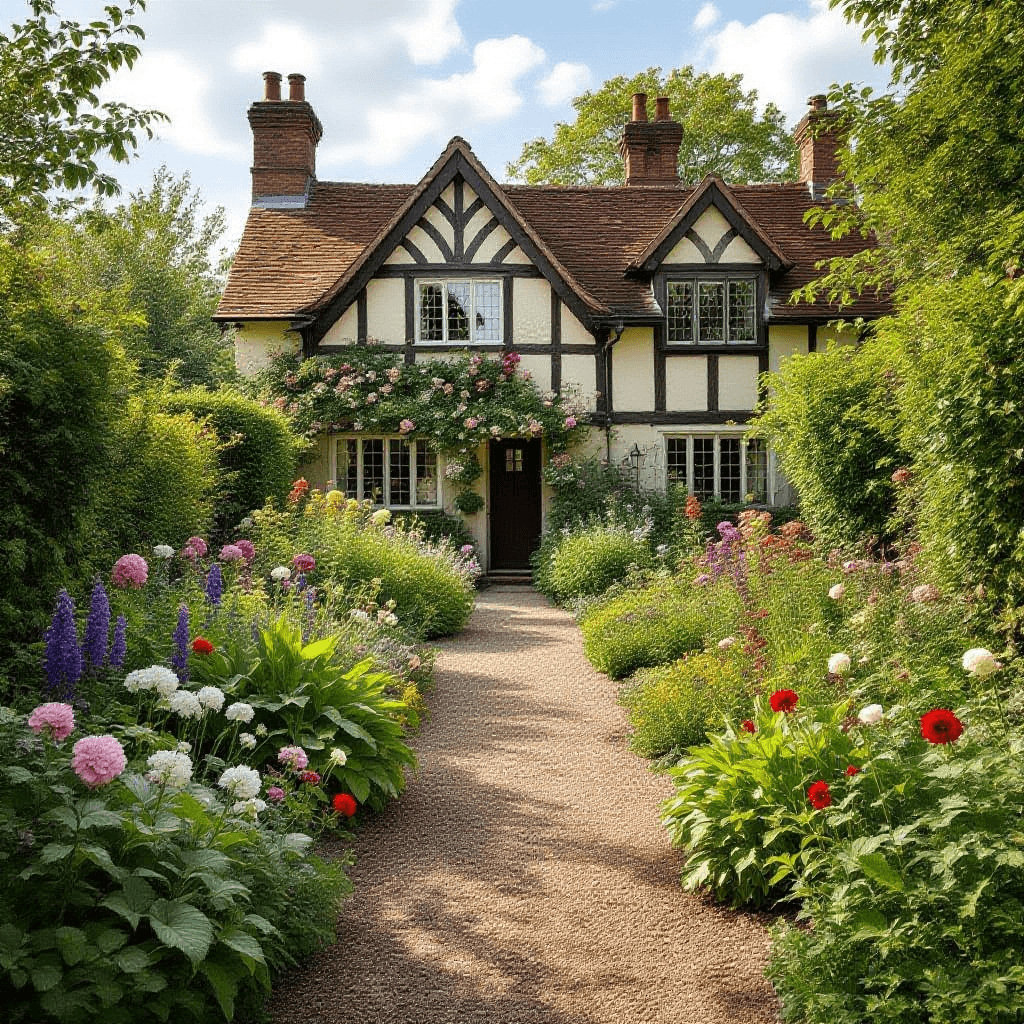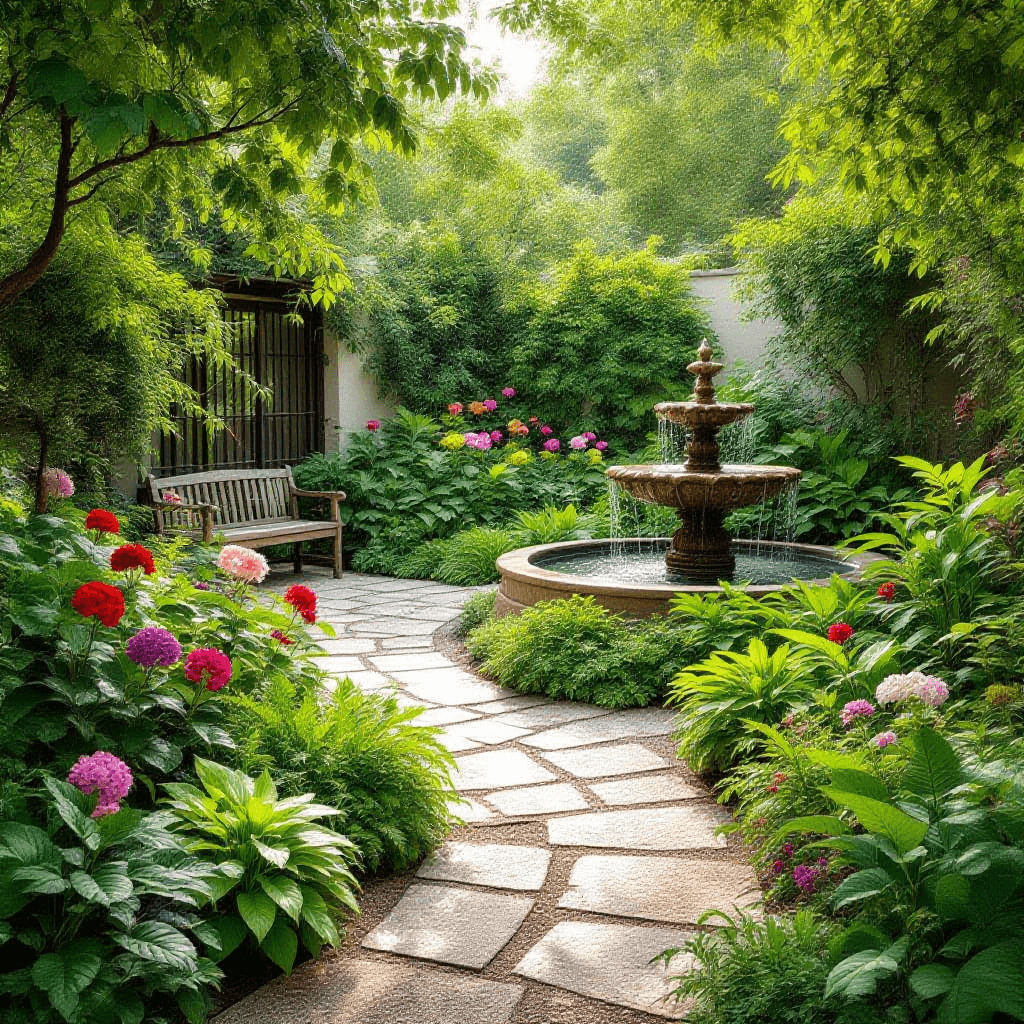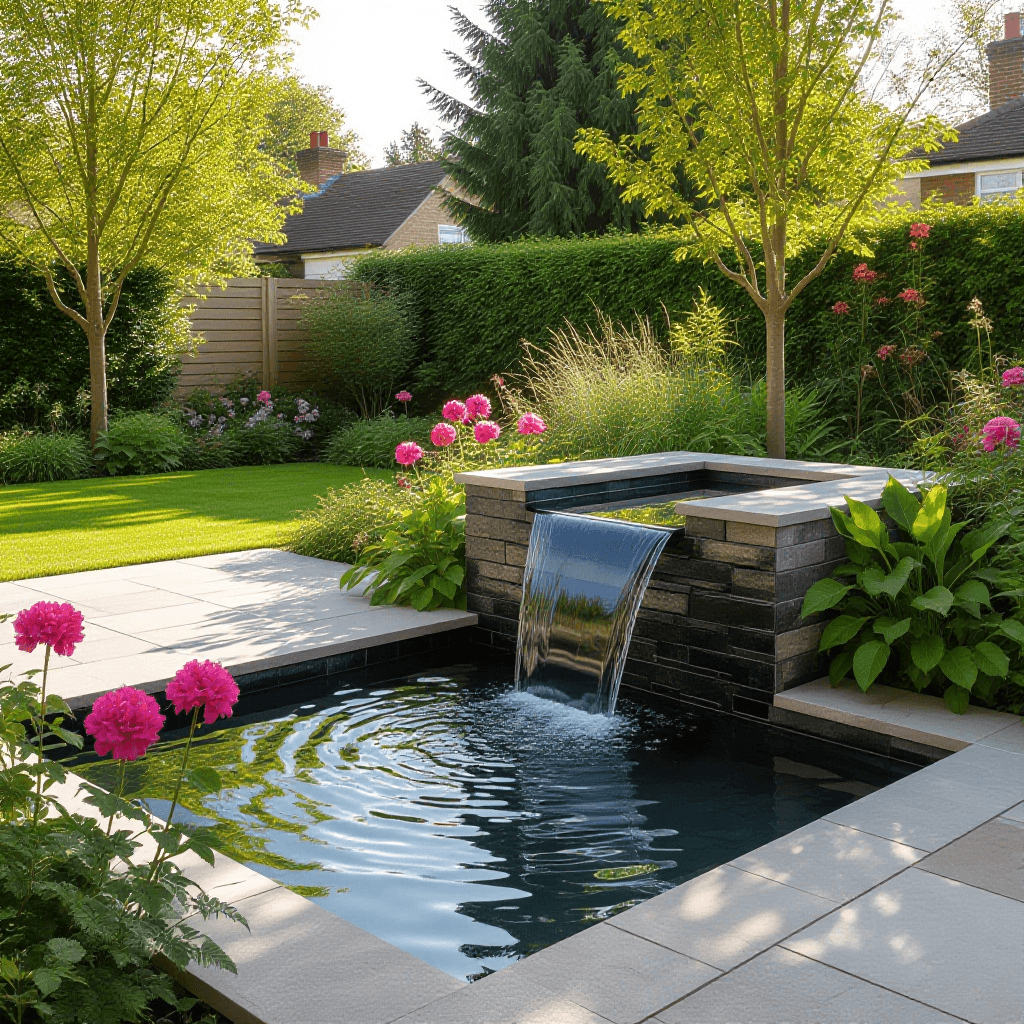Understanding the Essence of a Traditional English Country Garden
A traditional English country garden is a harmonious blend of nature and artistry, characterized by its rich biodiversity and aesthetically pleasing arrangements. At the heart of this garden style is a deliberate layout that evokes a sense of tranquility and charm. The design typically features meandering pathways that guide visitors through a diverse landscape, encouraging exploration and appreciation of the garden’s beauty. These winding paths are often lined with rustic materials, such as weathered stone or gravel, which not only enhance the aesthetic appeal but also complement the naturalness of the garden environment.
Central to the essence of a traditional English garden is the selection of plants. Cottage-style flowers, such as lavender, roses, and foxgloves, are quintessential elements of this garden type. Their varied colors, shapes, and sizes create an enchanting tapestry that supports local wildlife, including pollinators. The combination of perennial plants and seasonal blooms ensures that the garden remains vibrant throughout the year, inviting changes that reflect the passage of time and the rhythms of nature.
In addition to flowers, foliage plays a crucial role in establishing the character of a traditional English country garden. Layered shrubs and hedges contribute to the overall structure and privacy of the space, while allowing for seasonal variation through leaf changes. Moreover, incorporating herbs and vegetables not only enhances the garden’s utility but also connects it back to traditional gardening practices of sustainability and self-sufficiency.
Ultimately, a traditional English country garden fosters a feeling of serenity and connection with nature. By combining thoughtful layout, diverse plant selection, and rustic materials, gardeners can create an inviting and picturesque environment that embodies the timeless beauty and charm synonymous with this iconic garden style.
Planning and Designing Your Garden Layout
Creating a traditional English country garden begins with careful planning and thoughtful design. The first step is to choose an appropriate location for your garden. It is essential to select a site that receives ample sunlight, preferably at least six hours a day. Having a space with well-drained soil is also crucial as this ensures the plants thrive properly. Take the time to observe how sunlight and shadows play across your selected area throughout the day to inform your design choices.
Once you have identified the right spot, measuring out your garden space becomes essential. Accuracy is key; outline the perimeter using stakes and string to visualize the boundaries. This will help determine how much room you have to work with and provide an opportunity to consider the layout more concretely. When planning the size and shape of the garden beds, think about incorporating curvy lines, as they lend a more natural feeling to your garden, typical of a classic English garden.
Creating a design that allows for floral variety and seasonal interest requires thoughtful selection of plants. Incorporate perennials, annuals, and bulbs to ensure blooms throughout the growing season. Think about layering your plants, using taller varieties at the back of borders and shorter plants at the front to facilitate visibility and access. Aim to create a balance of colors and textures, providing visual harmony. Additionally, integrating features such as hedges can create structure and privacy, while archways may add romance and offer a focal point to your layout.
Incorporating seating areas invites enjoyment and relaxation within the garden. Benches or chairs can serve as vantage points for appreciating the floral displays you’ve created. Consider placing them strategically to allow for views of specific features or garden sections. Ultimately, these components combine to create a cohesive and enchanting traditional English country garden that reflects both beauty and functionality.
Selecting the Perfect Plants for a Classic Look
Creating a traditional English country garden requires a thoughtful selection of plants that embody the quintessential aesthetic. When envisioning this space, one must consider a variety of elements ranging from perennial and annual flowers to shrubs and trees. The goal is to cultivate an inviting and romantic atmosphere that evokes the charm of the English countryside.
Perennial flowers form the backbone of the garden, providing a reliable burst of color year after year. Popular choices include delphiniums, peonies, and roses, which are often celebrated for their beauty and fragrance. Annual flowers such as sweet peas, nasturtiums, and calendulas can be incorporated for seasonal interest, further enhancing the dynamic array of colors. A harmonious color scheme, featuring soft pastels alongside vibrant hues, is essential for achieving that sought-after classic look.
In addition to flowering plants, one should consider the inclusion of shrubs and trees that complement the garden’s aesthetic. Boxwoods and lavender are frequently utilized to establish formal borders and add structure, while larger flowering trees such as cherry or magnolia can create striking focal points. The strategic placement of these plants not only contributes to visual appeal but also encourages seasonal blooming, enabling the garden to evolve throughout the year.
Fragrance also plays a vital role in evoking the quintessential atmosphere. Plants such as honeysuckle, jasmine, or scented geraniums can fill the air with delightful aromas, making the garden a sensory experience. Companion planting is beneficial as well; grouping certain plants together can enhance growth while deterring pests. Herbs like rosemary, thyme, and sage not only introduce fragrance but also serve practical purposes in the kitchen. By thoughtfully selecting plants, gardeners can successfully recreate the charm of a classic English country garden.
Maintaining Your English Country Garden: Tips for Longevity
To achieve the quintessential charm of an English country garden, regular maintenance is essential. A well-kept garden not only enhances the aesthetic appeal but also promotes the health of the plants. Watering is a crucial aspect of maintenance. It is advisable to water early in the morning or late in the afternoon to minimize water evaporation and ensure efficient absorption by the roots. Aim to provide deep watering sessions to encourage plants to develop robust root systems, adapting to fluctuations in rain and temperature.
Pruning is another vital practice that aids in maintaining the shape and health of the plants. Regularly trimming back overgrown branches encourages new growth and allows for better air circulation. Timing is key; for instance, spring is generally ideal for pruning specific flowering shrubs, while late summer is typically best for herbaceous perennials. Furthermore, plants benefit from a balanced fertilization regimen. Utilize organic fertilizers or compost to provide essential nutrients without the risk of chemical buildup that can harm the soil ecosystem.
Pest management should always prioritize organic methods. Encouraging beneficial insects such as ladybugs and lacewings can naturally control pest populations. Additionally, regular inspections of the plants will help in early detection of any issues. For mild infestations, simple solutions such as neem oil or insecticidal soap may be effective. Seasonal tasks also play a pivotal role in preserving the garden’s classic look. Deadheading spent blooms fosters prolonged flowering and maintains a tidy appearance, while cleaning pathways ensures accessibility and invites engagement with the space. Regular weeding and mulching will further enhance the overall health of the garden and contribute to its charm.


